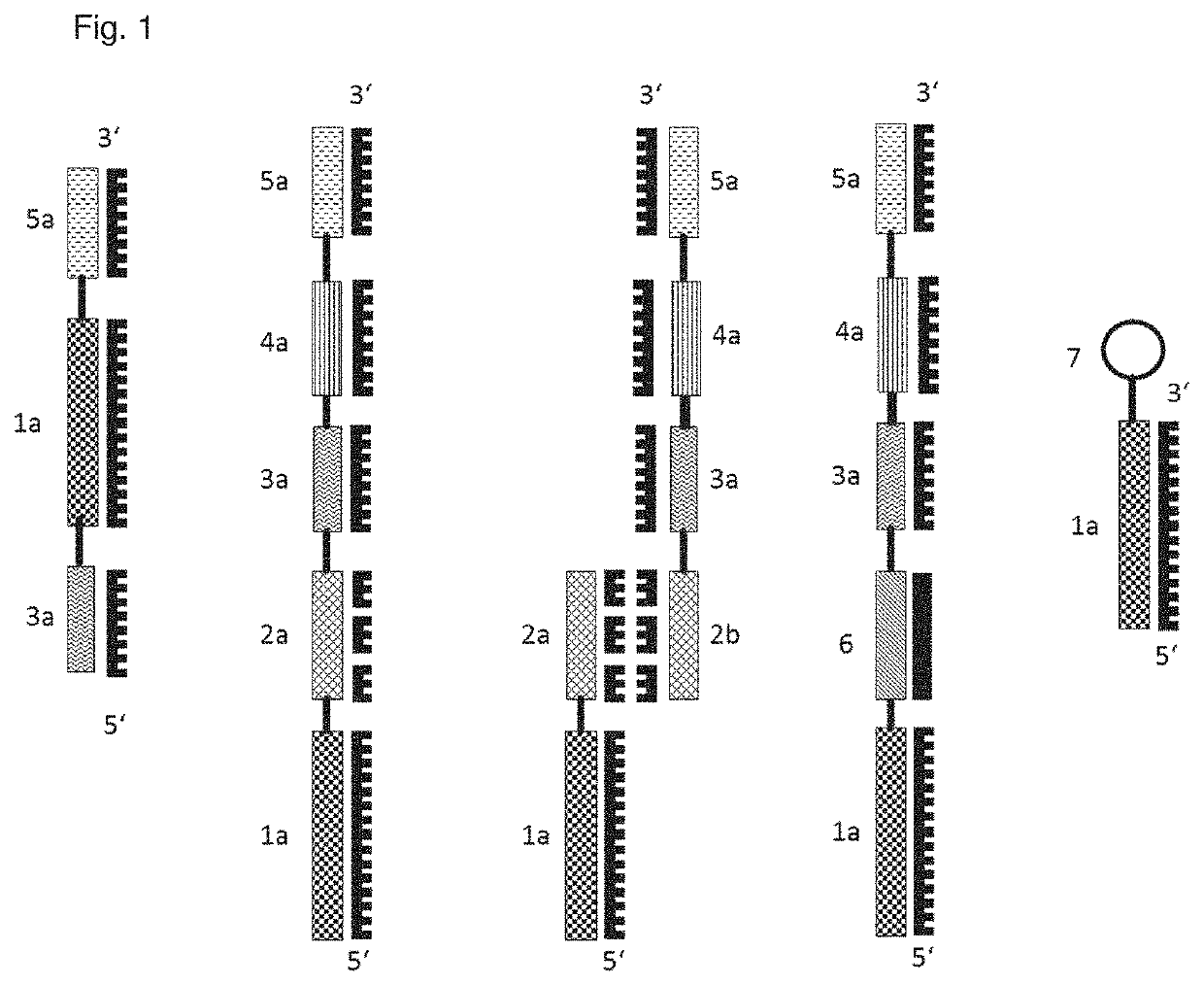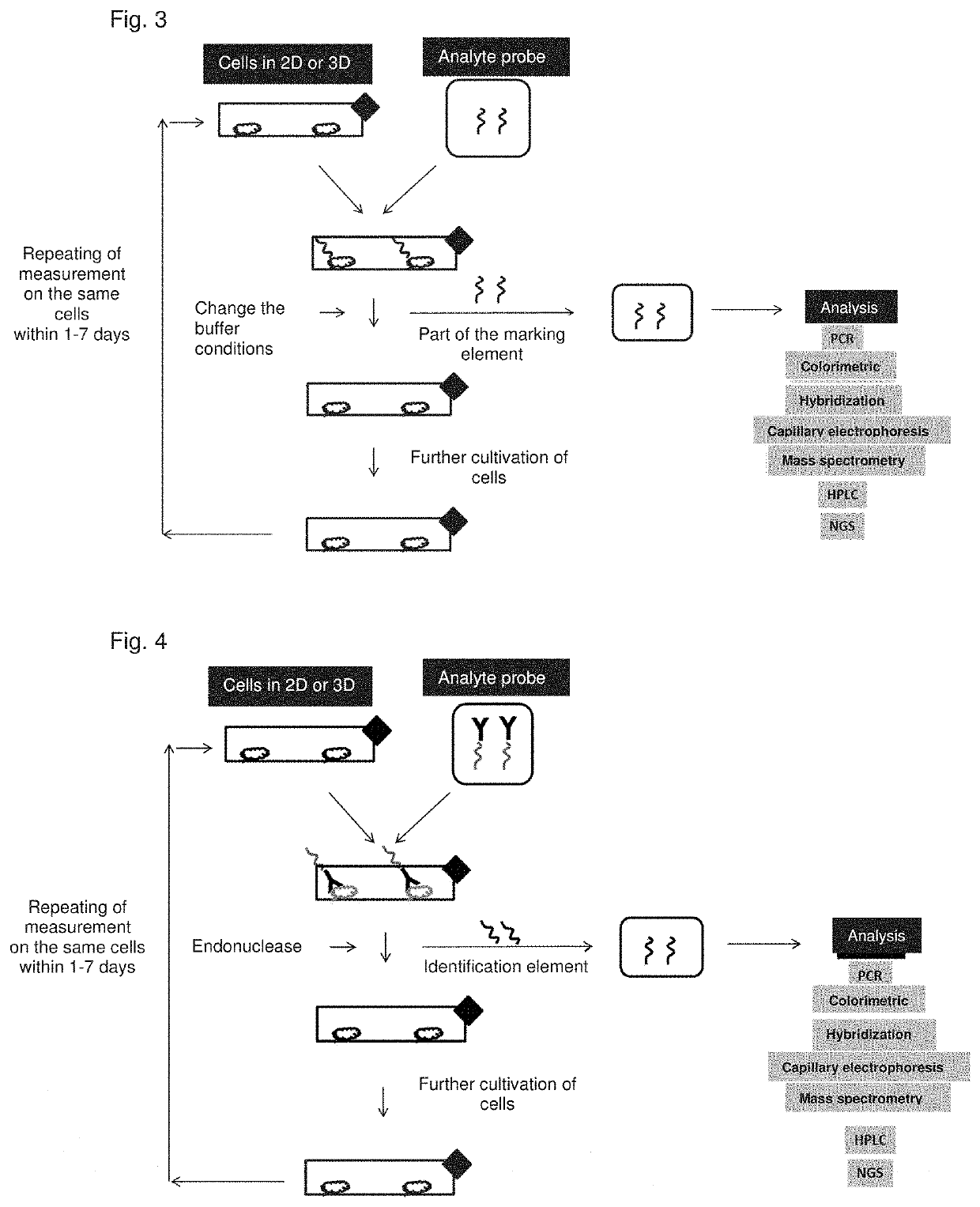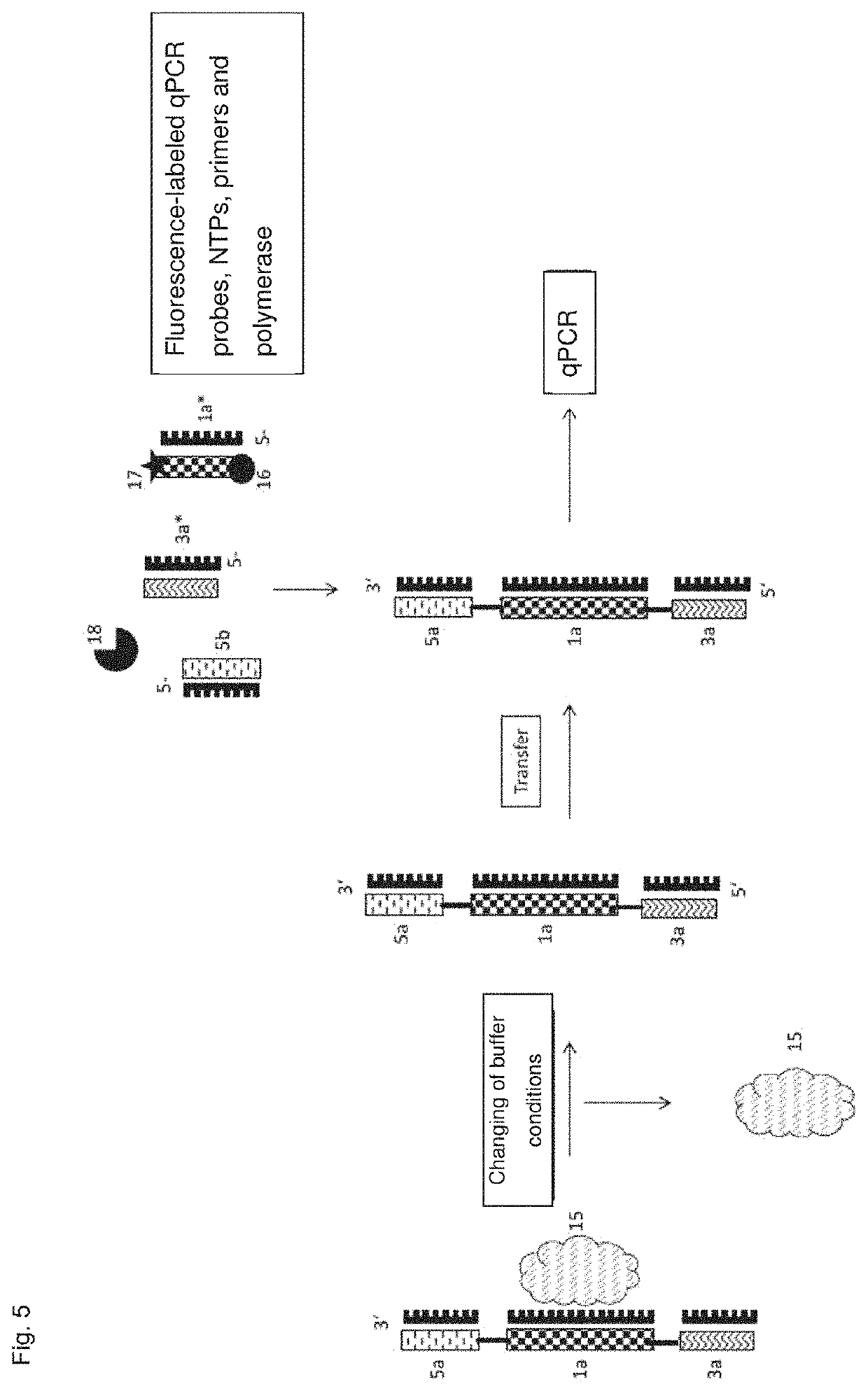In situ cell analysis in cell culture system
a cell culture system and in situ cell technology, applied in the field of in situ cell analysis, can solve the problems of inability to monitor cells without, lack of suitable in-situ controls,
- Summary
- Abstract
- Description
- Claims
- Application Information
AI Technical Summary
Benefits of technology
Problems solved by technology
Method used
Image
Examples
example 1
Structure of Analyte Probes
[0159]As shown in FIG. 1, analyte probes can consist of the following parts:
[0160]1. from the left—An aptamer (1a) as a single strand may contain one or two identification elements as identification sequences (3a, 5a).
[0161]2. from the left—Shown here as a single strand. These identification sequences can be attached 5′ or 3′ at the aptamer. A connecting element (2a) (RNA or DNA) can be provided between aptamer and identification sequence. The connecting element can be single-stranded (2. from the left, 2a) or double-stranded (3. from the left, 2a and 2b).
[0162]3. from the left—2b shows a strand of the connecting element that is complementary to strand 2a. In the double-stranded embodiment, the identification element and the detection element can be present on different strands or on the same strands. Double strandedness allows the use of double strand-specific restriction enzymes to cleave the connecting element. Furthermore, a qPCR identification sequenc...
example 2
Process Flow
[0171]FIGS. 3 and 4 show schematically the processes of methods according to the invention. From top to bottom, from left to right, following the arrows: Cells are cultivated in 2D or 3D. Analyte probes (in FIG. 3 with antibody detection element; in FIG. 4 as aptamer) bind to the cells via the detection element. The identification element is released—in FIG. 3 by changing the buffer conditions and thus interruption of the binding to the cells, in FIG. 4 by an endonuclease. The cells can then be cultured further (bottom left). The identification element is now separated from the cells and transferred to another container and submitted for analysis, e.g. via PCR and determination of the amplificates, colorimetrically, by hybridization with a labeling probe, capillary electrophoresis, mass spectrometric determination, HPLC, NGS. FIG. 5 shows a process flow for use of an analyte probe with an aptamer 1a, which binds a cell surface molecule (15) as the detection element. The ...
example 3
Aptamer Development
[0173]For the selection of appropriate aptamers as the detection element a DNA aptamer library (Trilink Biotechnologies) was chosen, consisting of a randomized 40 base sequence and flanking defined primers. The first two SELEX rounds were performed directly against adipocyte-derived mesenchymal stem cells (adMSCs / Thermofischer), followed by 10× SELEX rounds against His-tagged CD105 protein (Sino-Biological). Before the first round against cells, the aptamer library was amplified by means of PCR (Biomers For Primer / biotRevPrimer, Solis BioDyne Hot-Start FIRE-pol DNA polymerase) and then incubated with streptavidin beads (Promega). After incubation, the double strand was denatured for 5 min using 0.1 M NaOH, transferred to a new Eppendorf tube and brought to pH 7 with 0.1 M HCl.
[0174]For the first SELEX round, adMSCs (P3) were washed in a T-75 flask (Biogreiner) with 5 ml of Alpha-Mem (SigmaAldrich) without FCS. The aptamer library was diluted in 3 ml of Alpha-Mem w...
PUM
| Property | Measurement | Unit |
|---|---|---|
| time | aaaaa | aaaaa |
| time | aaaaa | aaaaa |
| time | aaaaa | aaaaa |
Abstract
Description
Claims
Application Information
 Login to View More
Login to View More - R&D
- Intellectual Property
- Life Sciences
- Materials
- Tech Scout
- Unparalleled Data Quality
- Higher Quality Content
- 60% Fewer Hallucinations
Browse by: Latest US Patents, China's latest patents, Technical Efficacy Thesaurus, Application Domain, Technology Topic, Popular Technical Reports.
© 2025 PatSnap. All rights reserved.Legal|Privacy policy|Modern Slavery Act Transparency Statement|Sitemap|About US| Contact US: help@patsnap.com



